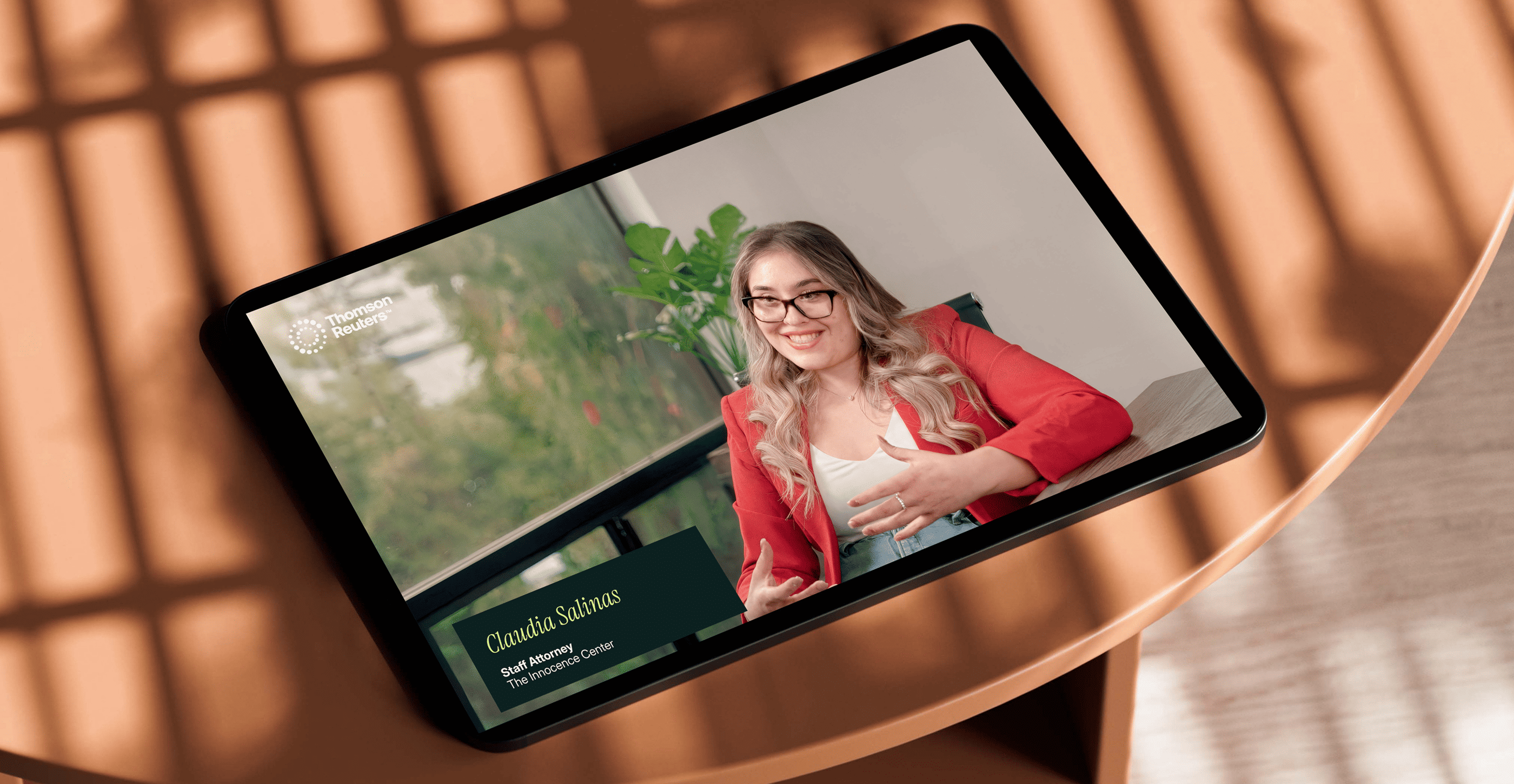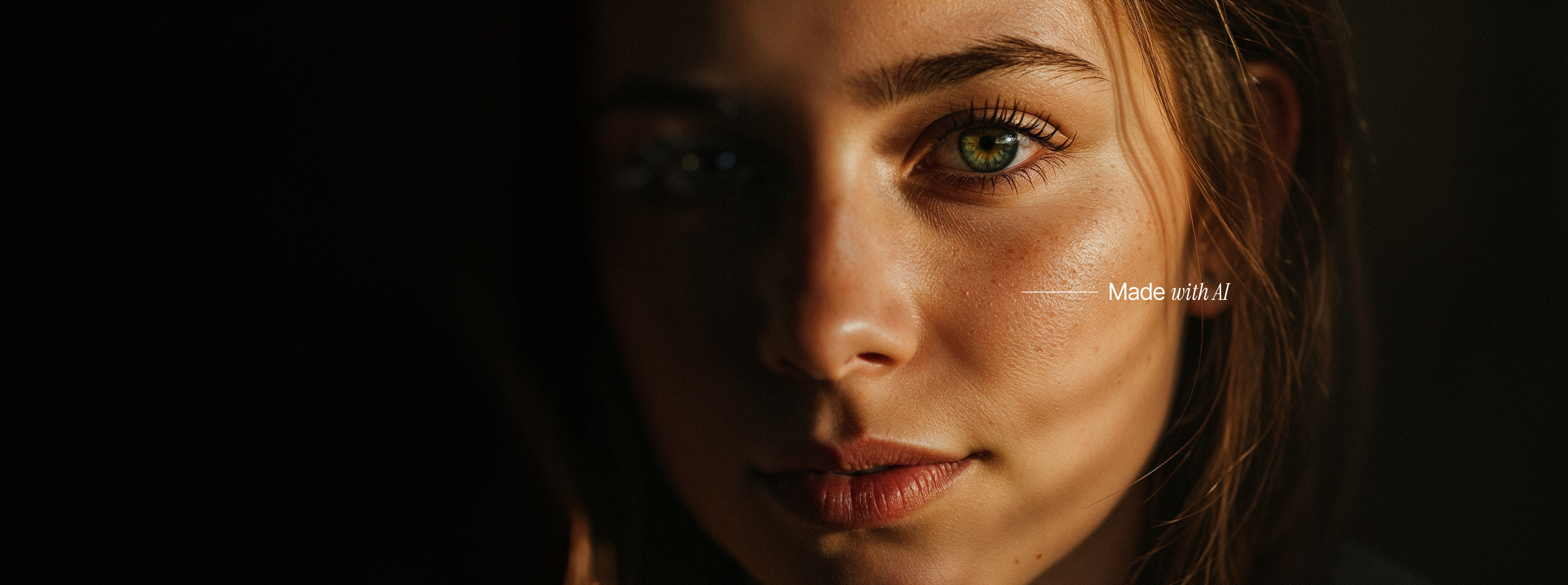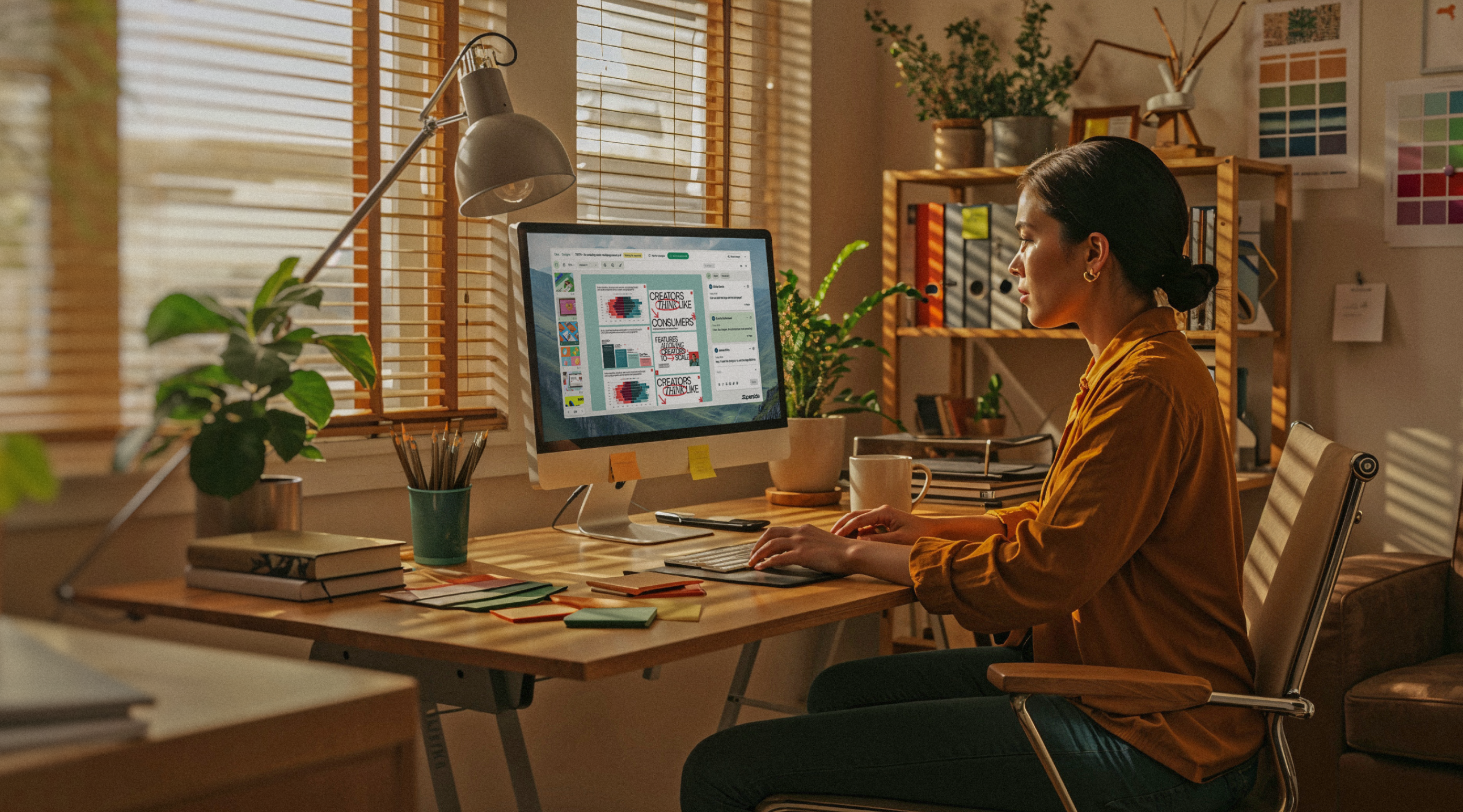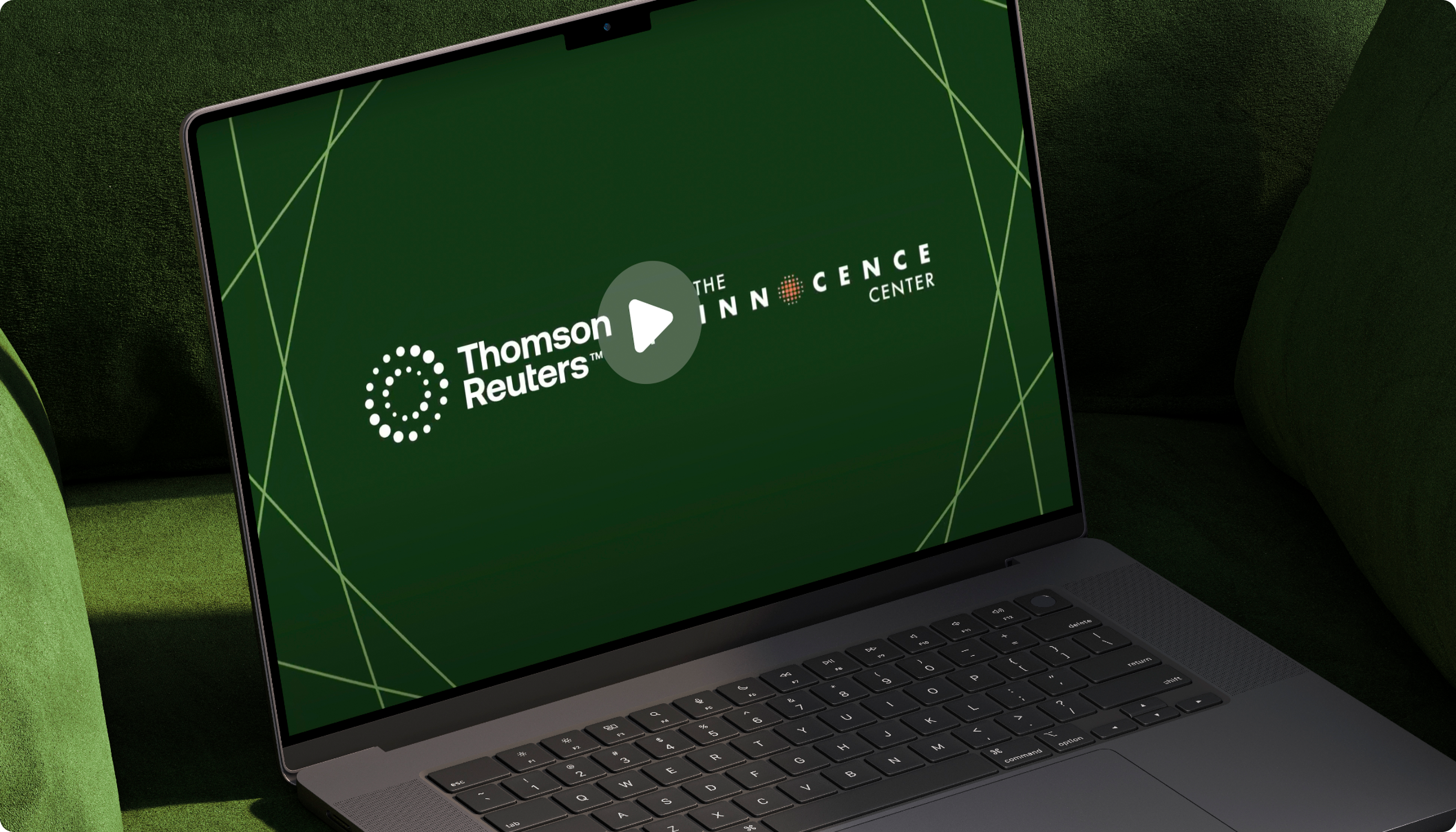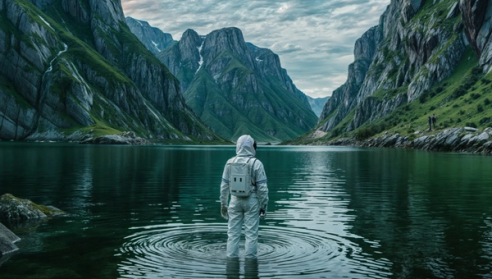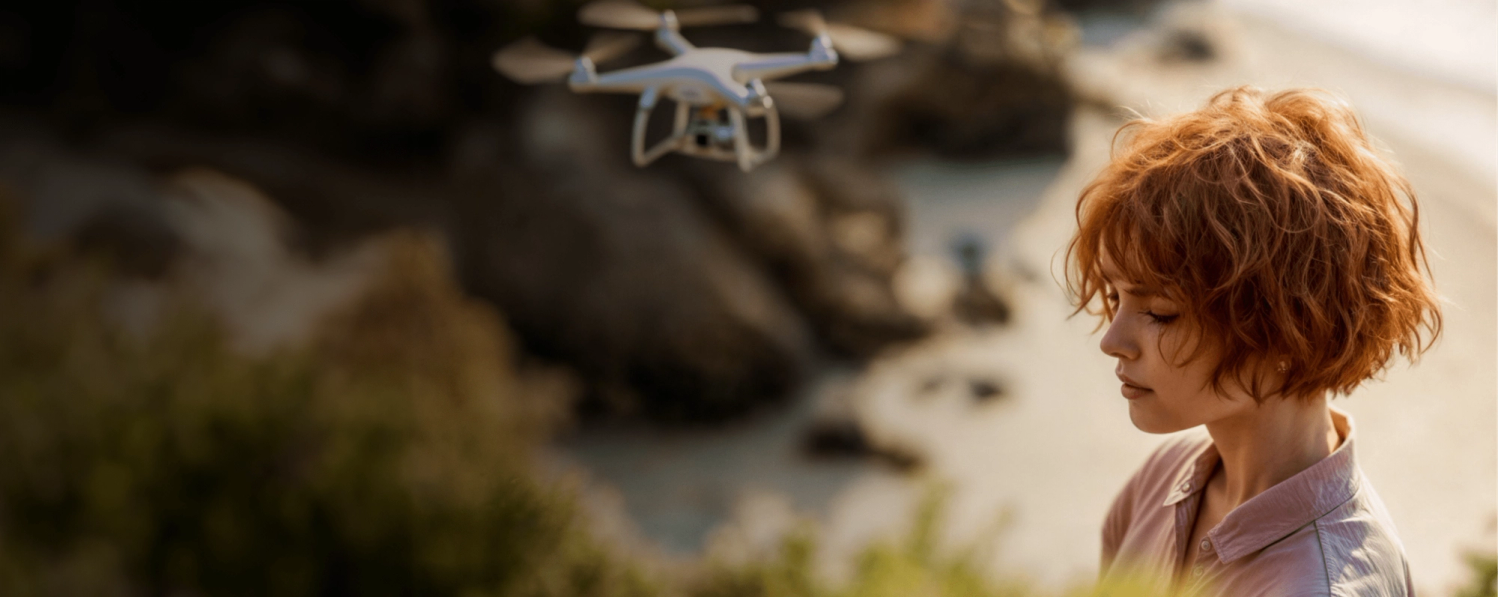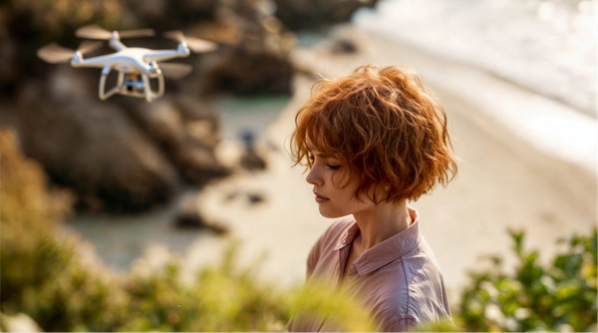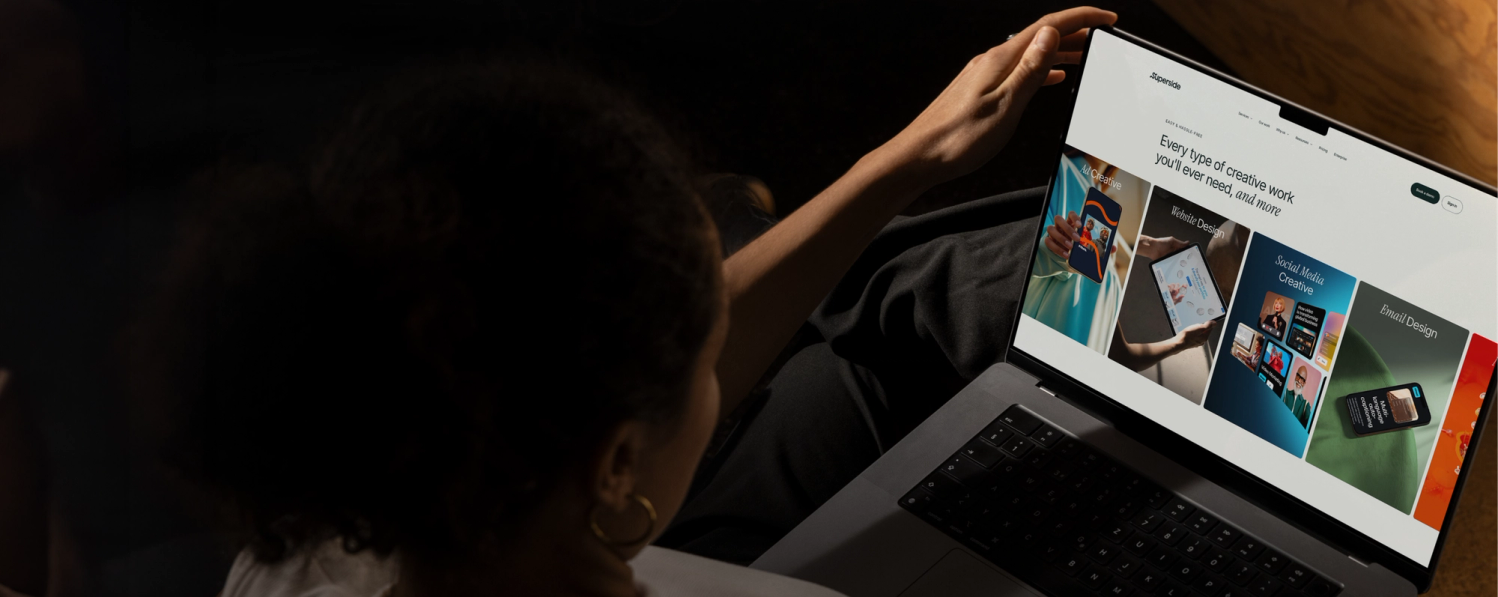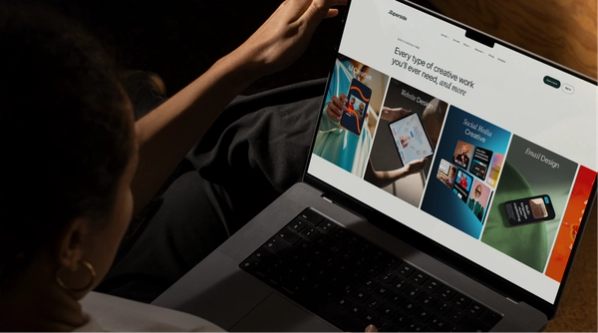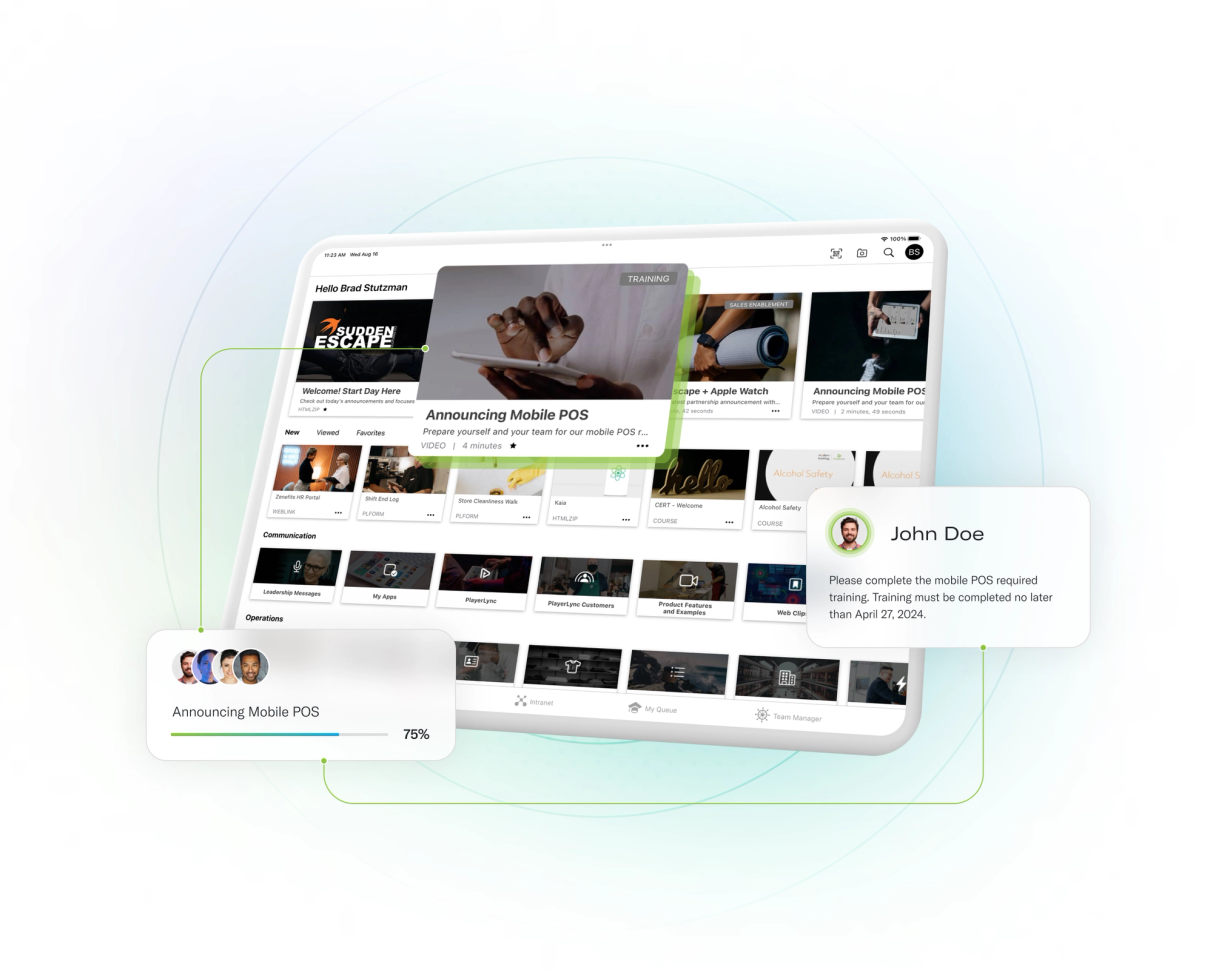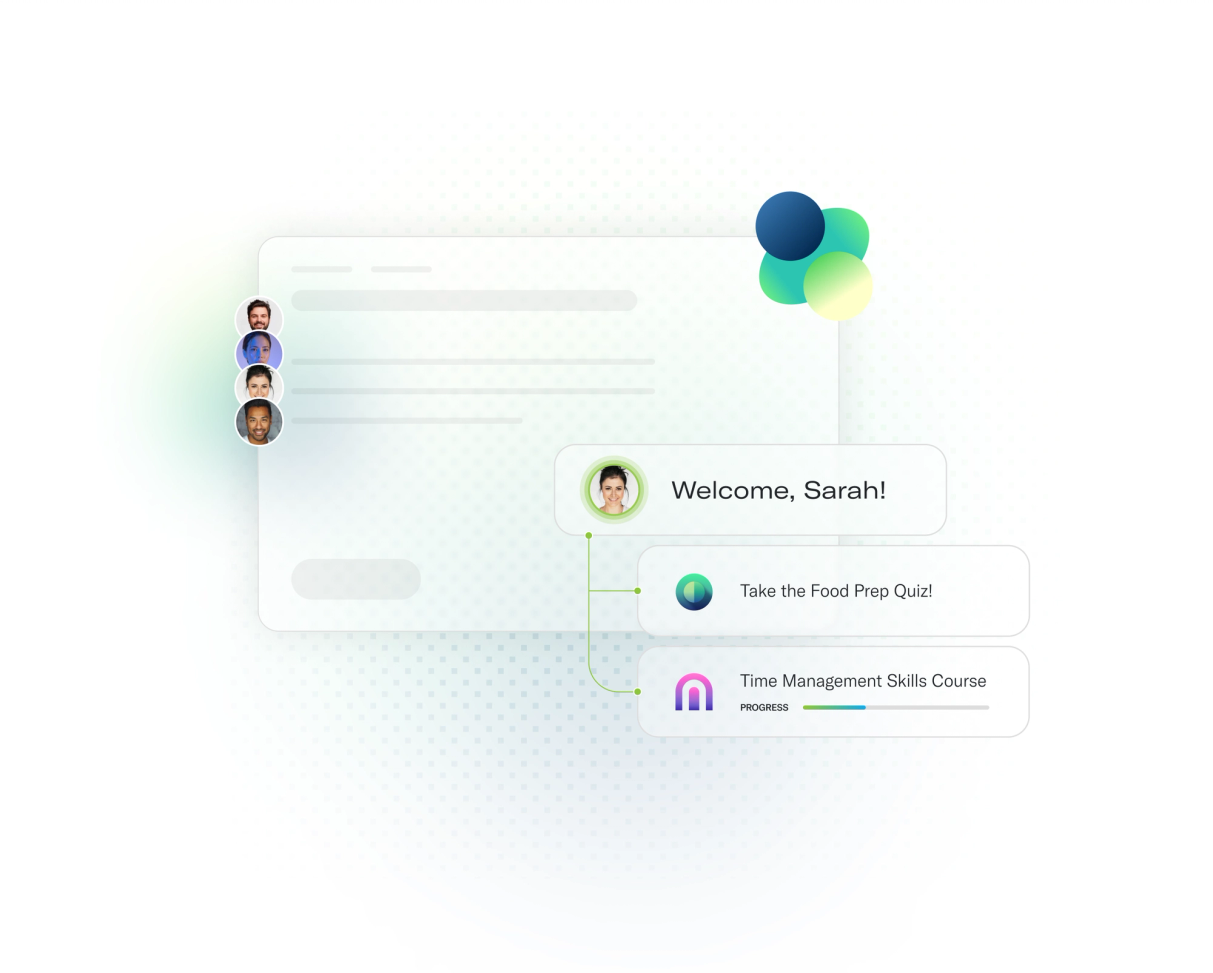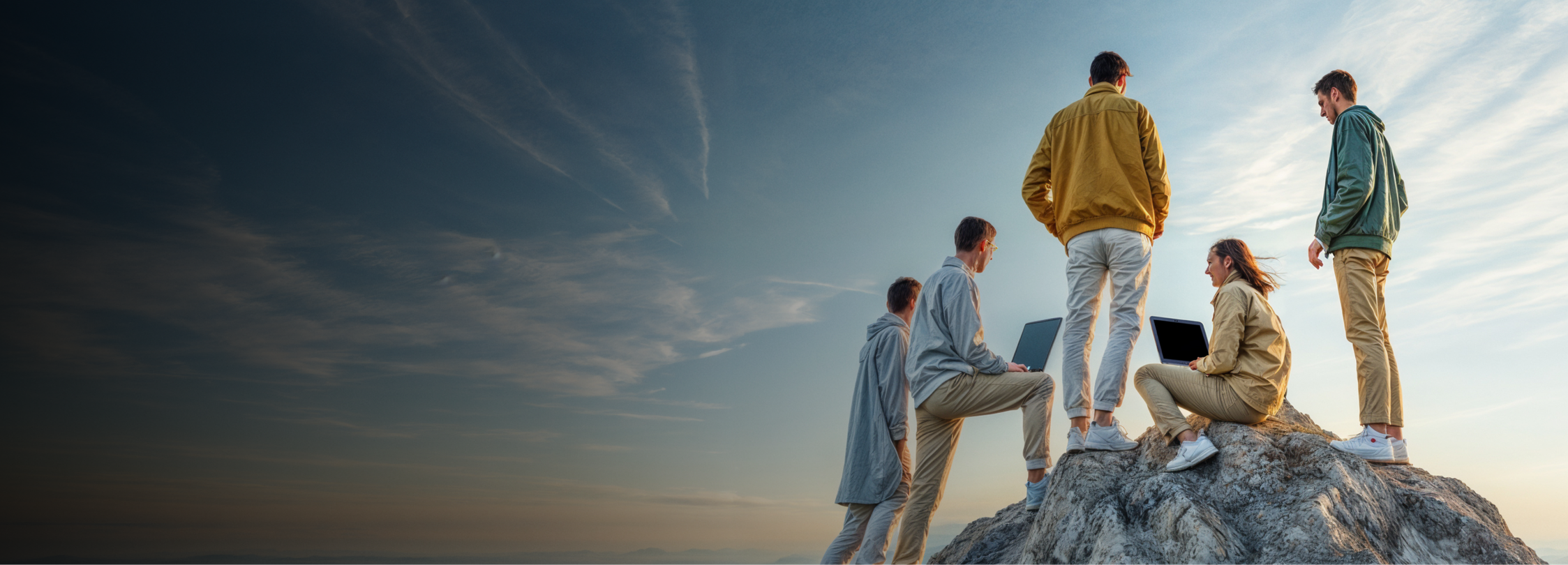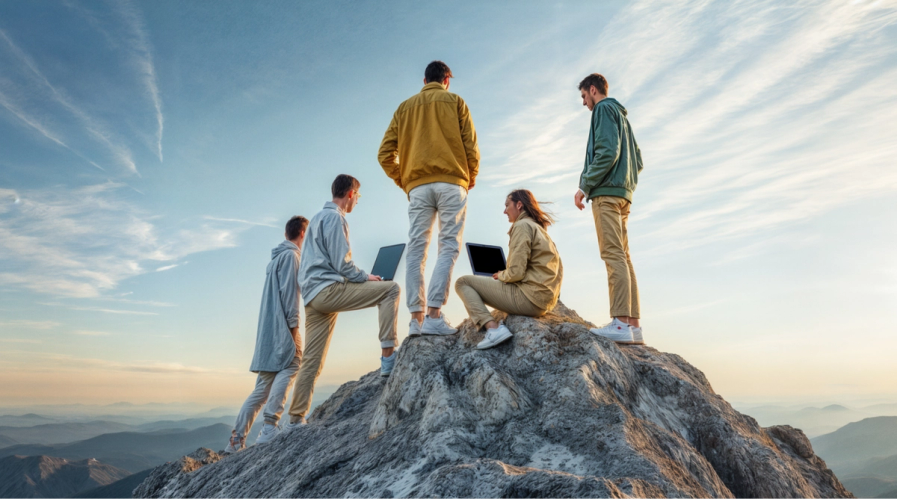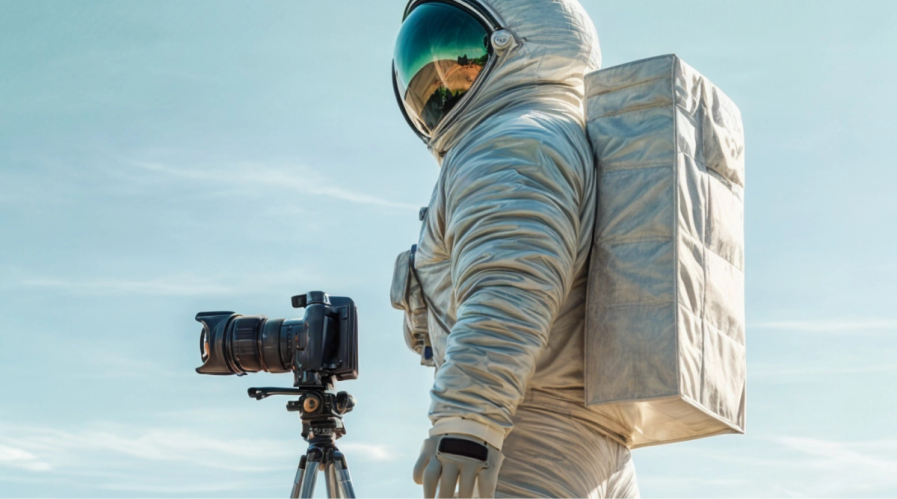5 AI video trends & predictions for 2025 according to our experts
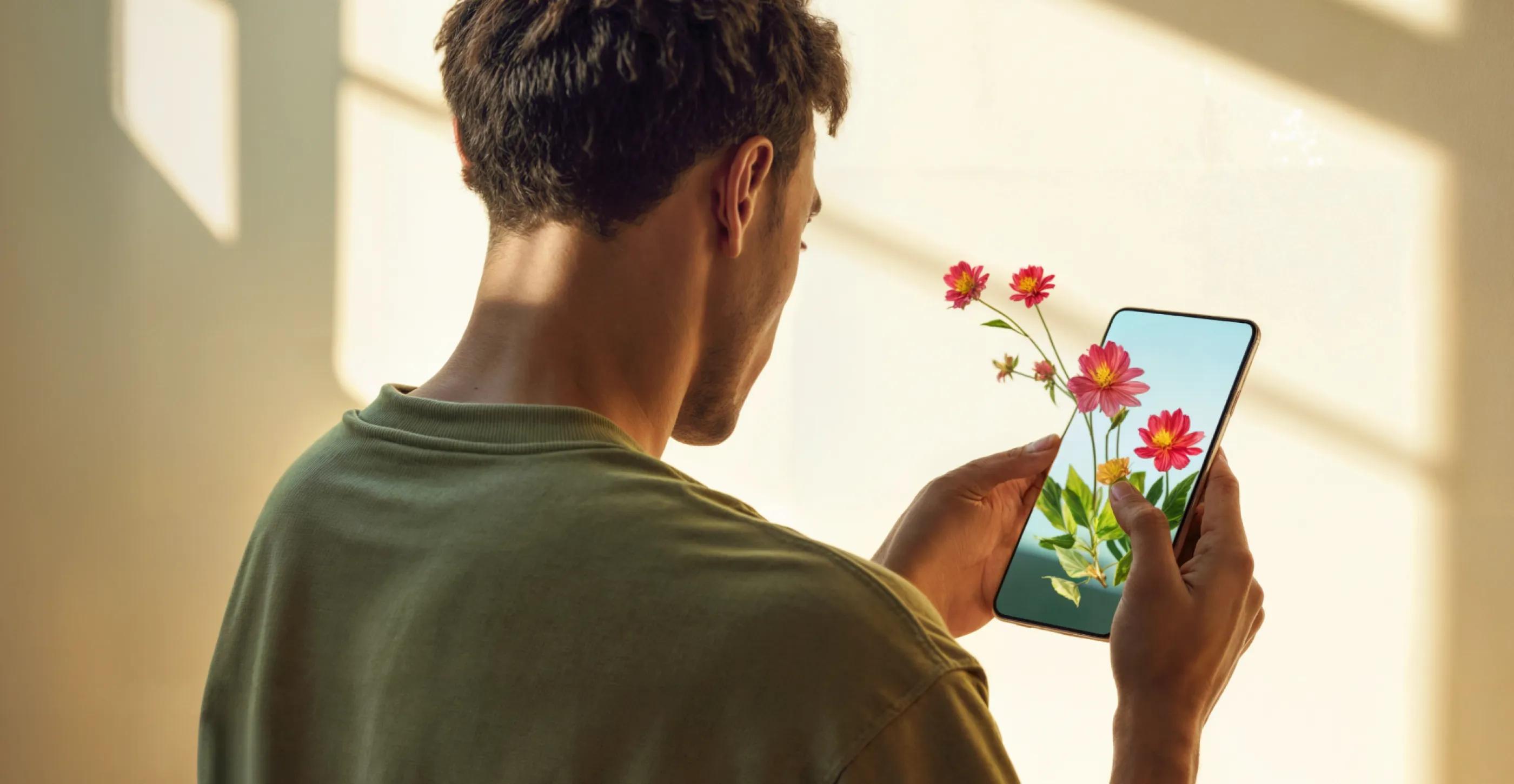
Video marketing is sizzling—and artificial intelligence (AI) is elevating it to new heights in 2025. From custom AI image models to next-gen avatars, Darren Suffolk, Creative Director of Video Services, and Júlio Aymoré, Creative Director of Generative AI Excellence, make some big AI predictions for the year ahead, including how forward-thinking teams can use video to drive creative efficiency and meaningful engagement at scale.
Just a few days ago, Runway launched its Gen-4 AI video model—its most advanced model to date. By the end of 2025, chances are, it’ll already be out of date.
That’s the pace we’re looking at when we talk about AI-generated video content. With the speed at which these advances are taking place, there’s no question AI video will transform marketing as we know it.
More than 62% of businesses use video in their marketing strategies, and 98% cite it as effective—making video essential for every brand. And now, AI is accelerating that impact.
In 2025, advancements in AI technology offer new opportunities for brands to tell their stories more effectively for their unique needs. In particular, AI is making video content production faster, more cost-effective and scalable than ever before.
In this article, Darren Suffolk, Creative Director of Video Services for Superside, and Júlio Aymoré, Superside’s Creative Director of Generative AI Excellence, break down the emerging trends shaping AI-driven video creation in 2025.
So, if you’ve been sweating the AI craze and trying to keep up to date with the pace of video tech updates, not to worry. Keep reading for everything you need to know about the future of AI in video as a creative or marketer.
The constant evolution of AI video production
Here’s a peek at what Runway’s new video model is capable of. Pretty incredible, right?
Thinking back to what was possible from an AI design perspective a year ago, the contrast is stunning. Motion design with AI was hard, but promising.
Now, as Superside’s Director of Generative AI Excellence, Phillip Maggs, predicted: The dominoes have fallen and AI video is unlocking brand new opportunities for creative and marketing teams.
Historically, as AI algorithms have improved, new applications have been discovered. Beyond text-to-video generation, AI now has extensive uses at the post-production stage. From TV shows and films to ads and brand videos, AI can help refine content by fixing visuals, optimizing lighting and removing background noises.
Now we are far past testing AI for video outputs—we’re using it with intent, as part of a thoughtful creative process that enhances pacing, structure and meaning.

The TL;DR: AI now supports human-led, full-scale video production—from scripting and storyboarding to creating consistent AI avatars, generating motion graphics and customizing visuals for different regions and audiences.
Style references and advances in AI functionality are making it easier to create consistency across generated assets.
With more increasing control over generated, creators can replicate specific aesthetics and design systems at scale—resulting in outputs that feel cohesive, aligned and on-brand.

At Superside, we’ve seen firsthand the difference AI can make in video production.
For example, we leveraged AI to deliver a high-quality animated video for our customer Synthego in just five days—a feat that would’ve previously been impossible (or at least, required a few all-nighters!). This compelling AI-enhanced video helped Synthego simplify a complex product story and drive meaningful business results.
Meanwhile, the use of AI on this project cut design hours by 39%, saving the company over $5,000—without sacrificing storytelling quality.
And since then, Superside has made great strides in the realm of AI adoption, completing 3,000+ AI-powered projects and cutting design hours by on average 40% for our customers.
Today, we combine cutting-edge generative AI tools with expert creative direction to deliver high-quality, on-brand assets and video content for our customers—more efficiently and cost-effectively than ever before.
In fact, we’ve saved our customers a whopping $3.5 million in creative costs since implementing AI into workflows.
With 90% of our creative team AI-certified, Superside is uniquely positioned to help brands implement AI-powered creative workflows and accelerate video production.
As the AI landscape continues to evolve, going beyond experimenting with prompts and truly implementing this technology into creative workflows is becoming the focus for world-class brands and creatives. As Suffolk puts it:
AI isn't a trend anymore, it isn't going back in the box. We need to start thinking about AI like any other tool. What new possibilities does it offer to us? How can it make the creative journey easier/better? Is this what will allow production to hit new levels of responsiveness or individualisation?

Anyone can drop a prompt into a video tool and generate a clip. But real strategic value comes from using AI intentionally, guided by experienced video professionals, to amplify creativity and ensure every asset drives impact.
Looking ahead, our experts have identified five top AI video trends for 2025 that marketing and creative leaders should watch closely:
- Training custom AI models on multi-modal tools to generate on-brand video
- The rise of strategic AI avatars and synthetic influencers
- Using static imagery to create moving content
- Homogenization of creative assets (our prediction)
- SEO for video cultivation (our prediction)
By understanding these predictions and trends, you’ll have the information you need to get ahead of the curve on AI-generated video this year. So keep reading and get ready to implement AI-powered video strategies that will help your brand stay competitive, creative and in control in 2025 and beyond.
5 AI video trends and predictions for 2025
AI continues to shake up the marketing world, while video remains a powerful tool for capturing target customers’ attention. Combine the two and you have the ultimate creative power couple.
Let’s take a closer look at the emerging video trends shaping the marketing landscape this year.
1. Training custom AI models on multi-modal tools to generate on-brand video
Real-world example: AI video models like Google Veo2 and Cleanvoice AI are already pushing the boundaries of integrated workflows, where a single interface can handle voice, visuals and structure at once.
In 2025, AI-powered video creation is no longer about experimentation—it’s about execution at scale.
One of the most transformative advances? The rise of custom-trained, multimodal AI models that go far beyond content generation.
These models can be trained—within a dedicated AI tool—with existing brand assets and materials or with a specific video style or format that enables businesses to bring creative ideas to life with visual consistency, speed and brand alignment.
These multimodal tools can save prompts and asset references to create a model that ensures video output is on-brand. Then, a creative can generate or edit images, prototype videos, change animation style, sounds, visuals and more—all within a streamlined, visual-first interface that remembers a brand style and applies it consistently.
What’s more, many AI platforms, like Flora AI or ComfyUI, feature node-based workflows (like the one you'll see below) that give designers greater control over each step of the process—from ideation to first draft—before moving on to human refinement and iteration.
In these interfaces, you can have [for example] a text node where you write what you want, and it converts it into a command that you can send to another node. The command gets processed and from there, you send it to an image mode. Then, into a video or audio node. All in just one place.

Of course, these AI tools and custom models don’t replace creativity; they enhance it, offering a faster, smarter starting point for high-quality, on-brand design.
The time has come.
— FLORA © (@florafaunaai) November 11, 2024
One static image, four mind-blowing videos. Experience outstanding clarity, continuity, and control with Runway, Luma, Hailuo, and Kling, all in FLORA starting today.
FLORA gives the easiest access to try the most powerful tools. Try it for free today using… pic.twitter.com/IJkuBduWEB
Historically, complex production processes like stop motion, 3D animation, or stylized photography required significant time and budget. But with today’s AI tools that can accommodate custom models to produce on-brand assets at scale, these once high-barrier formats are now far more accessible and scalable.
Creative teams can explore bold visual directions, iterate faster and bring top-level production to everything from product video explainers to full clothes collections for eCommerce and localized social content—without the heavy lift of manual mass production.
A few years ago, it was complex (and inconsistent) to generate a single image that aligned with brand expectations. Today, thanks to multimodal tools like Flux AI, Runway, ComfyUI, Flora AI and Kling, we can train models to generate video from just a few image references or brand assets—and iterate across multiple formats with remarkable speed.
This has unlocked an entirely new kind of creative workflow—one where AI enhances and accelerates the human vision instead of replacing it.

Júlio demonstrated this evolution firsthand in his AI-generated short film, Burden.
Using tools like Krea AI, GPT-4o and Flux AI, he trained models on just a handful of images—including portraits of himself and his wife, and from there, produced an entire cinematic narrative: storyboard, animation, audio design, voiceover and final edit—all while maintaining a cohesive, consistent look.
All of his models were trained on Krea AI (an AI-powered extension that can be connected to AI video generators like GPT-4o or Flux AI) using a few images of himself, his wife and a cat-like companion. From there, he built every scene, every shot and every beat of narrative.
Now I can train a model based on those five good images of the character. And with the trained custom model, now I can create any kind of imagery or create any kind of specific scene with that character.

What makes this trend so disruptive is the multimodal evolution of AI platforms. Inputs like text, images and audio can now be translated across media—automatically generating animations, soundscapes, transitions and more from a single, trained model.
Clearly, we still need human support to see this through, but what seemed impossible a few months ago is now more accessible to creatives and producers looking to enhance video content than ever before.
Multimodal AI tools as a new way to create engaging video content
Multiple enterprises are now using custom AI models to accelerate their workflows and produce creative at scale.
In terms of ad creative, I think this and next year we are going to start seeing a lot more videos done completely with AI. There are already people individually creating music videos and trailers with the integration of multiple models in a single tool.

In a marketing context, multimodal tools offer huge potential for optimized video content, like AI-powered ads, that’s tailored to your brand. You can now:
- Fix or remove visual errors without reshoots
- Add voice, motion, and visual effects in minutes
- Auto-suggest cuts or scenes based on narrative tone
- Create new footage that matches old assets
- Reimagine or scale up CGI & 3D assets in minutes
- Improve audio fidelity and master soundtracks
- Scale brand storytelling across geographies and formats
- Rapidly prototype creative ideas
- Personalize at scale
- And tell deeper, richer stories—faster
This is already being applied at the highest level. Netflix’s The Electric State, for example, worked with Wonder Dynamics to swap actors with AI-generated CGI characters—automatically adjusting lighting, movement and composition to match the original footage.
AI didn’t replace human direction—it enhanced the production at scale.
At Superside, we’re helping brands do the same, with stunning creative results.
Custom AI image models are no longer reserved for major Hollywood projects. They’re now practical, cost-efficient tools to:
- Reuse and reimagine brand assets
- Rapidly prototype creative ideas
- Personalize at scale
- And tell deeper, richer stories—faster
With AI, we’re enabling storytelling at a scale never before possible. It speeds up storyboarding, experimenting visually, creating soundtracks and transforming creative workflows entirely.

But it’s not about automating creativity—it’s about amplifying it.
With Superside’s AI-enhanced creative services, we help brands train their own custom models, integrate AI into their production pipelines, and scale creative assets with clarity and consistency.
Whether you need a single-character animation or a video series built around a visual identity, our creative teams can help you get there, with expert care and a human touch.
Curious what you can create with AI next?
Let’s build it together—frame by frame.
2. The rise of strategic AI avatars and synthetic influencers
AI-generated influencer videos made with Argil AI.
AI avatars and synthetic influencers are no longer a novelty—they’re becoming a core part of the marketing mix for forward-thinking brands. From Vtubers on Twitch to corporate spokespeople, product explainers, and even animated news anchors, these digital personas are showing up everywhere.
Some feel eerily lifelike, others lean into robotic aesthetics and many sit somewhere in between. Regardless of style, they’re spreading across social platforms every day and becoming more realistic every day.
But what’s evolving in 2025 isn’t just the look of these avatars—it’s their purpose.
The most important thing is having a strategic way behind creating those avatars.

Today’s synthetic influencers are being designed with personalities, emotional range and narrative consistency—making them brand characters rather than just hyperrealistic animations.
Whether used in transmedia campaigns, onboarding videos, or customer support content, these AI personas now serve as:
- Brand ambassadors
- Product explainers (that 73% of marketers prefer for product learning)
- Storytellers
- News anchors
- And even political commentators
Now, brands are using AI video avatars in different marketing strategies, and your audience can benefit from this approach for more than just entertainment, too.
The smarter approach to AI avatars for businesses
Real-world example: Duolingo partnered with Rive to enable AI-powered conversations with its characters and elevate user experience on the app. This is just the beginning of AI video generation for enterprises.
There's a common misconception that the success of an AI avatar depends on how realistic it looks. But the best-performing avatars often lean into intentional art direction rather than photorealism:
It’s not about mimicking a human perfectly. That’s nearly impossible. But we can craft fun, emotionally resonant experiences that people actually want to engage with.

In other words, success with an AI avatar doesn’t come from looking human—it comes from feeling honest and intentional.
Aymoré remembers Sophia the Robot as one of the most memorable examples of this concept: her robotic charisma and dry humor made her memorable not because she felt real, but because she owned her unrealness with personality and consistency.
Or take Duolingo again. By partnering with Rive to launch AI-powered conversations using its iconic characters, they created a richer, more interactive user experience that didn’t rely on realism but on relatability and fun.
This approach opens the door for brands to step outside the uncanny valley entirely—replacing generic avatars with creatures, cartoons, claymation or otherworldly characters that deliver better storytelling and spark emotional connections.
Another example: Johnson Controls approached Superside looking for a polished, photorealistic video. But instead of going down the expensive and slow conventional animation path, our team proposed something different: fully AI-assisted puppetry-style animation, complete with dynamic storytelling and fast iteration.
The result was Don’t Surprise Bob—a playful, expressive video that became a cornerstone of their brand storytelling. Plus, thanks to an AI-powered video workflow, we:
- Delivered 85% creative faster–and with the highest quality
- Saved Johnson Controls over $47,000 in production costs
- Created a standout video in a traditionally dry B2B category
The customer actually preferred the AI-driven puppet look over the original realistic idea. It felt more engaging and added flavor to the brand’s voice.

The success didn’t stop there. Superside went on to produce Breaking News and Clark’s Cake as follow-up videos in the same animated style, allowing Johnson Controls to scale their new campaign identity across formats and channels, without stretching timelines or budgets.
3. Using static imagery to create realistic moving content
AI-driven motion design allows brands to repurpose existing visuals into immersive videos, opening up new creative opportunities without the need for costly reshoots or high-lift video productions.
Tools like Runway, Luma Dream Machine, Flux AI and Pika Labs are enabling AI-powered creative teams to go from sketch to storyboard to full cinematic motion in minutes. These platforms let creatives experiment across visual formats at scale—testing ad variants, animating renders and generating story-driven scenes with speed and precision.
We now have more control over the design process because we own better image models that are more aligned and take less time to generate. In the past, we were generating 5,000 images to get five that were good, and now we are doing the opposite.

When it comes to ads, for example, this AI technology comes in handy as a quick option to try creative in different channels and ways and see how it performs, at a way lower cost.
This is more than just a trend—it’s a scalable creative opportunity. Instead of creating entirely new content from scratch, marketers can repurpose existing brand visuals and design assets into high-performing video formats, like:
- Take a static ad and turn it into a social-ready motion post
- Animate a product render for an explainer video
- Generate background environments or transitions from campaign stills
- Reuse brand imagery for new formats across channels
Even global giants like Unilever are rethinking content creation workflows. The company recently announced it was replacing traditional photo shoots with AI-generated product visuals and scenes using NVIDIA’s Omniverse platform. They can now generate high-quality, market-ready content in days—not weeks, while tailoring creative for specific regions and audiences.
Creative direction still matters for AI video production
The seamlessness that AI video production allows doesn’t mean that the output is cheap. AI-enabled creative companies can help integrate AI into your workflows, using trained tools to deliver high-quality, on-brand assets, not just quick, generic outputs.
The best digital ads often came from weird, unexpected ideas. I think it's where AI thrives most when we give the creatives—and at the same time the AI tooling—the freedom to explore this weirdness.

The market is already flooded with cookie-cutter, low-effort animations—and they’re easy to spot. What separates compelling AI-generated motion content from forgettable filler is creative direction. That’s where human expertise is essential.
What has never disappeared—and I don't think it will— is the need for a good creative director or a good cinematographer. Someone who knows how to tell a story in a sequence of images.

There are many reliable AI generators out there that can help you turn static images into motion designs. But at Superside, we can help you go beyond plug-and-play tools by combining this technology with world-class creative talent and direction and tapping into services like:
- Static+: Turn still visuals into expressive, cinematic moments
- Motion+: Add dynamic camera movement, transitions, and storytelling layers
- Character+ and Voice+: Animate unique personas and give them a voice
- AI-trained workflows: Maintain consistency and style across your campaign
Our in-house team of AI-powered motion artists doesn’t just press “generate”—they design, direct, and deliver videos that align with your message, your audience, and your goals.
Repurposing doesn’t mean compromising. With the right creative team behind the tools, static content becomes dynamic storytelling that scales across marketing channels, resonates with audiences and drives results.
4. Homogenization of creative assets (our prediction)
AI has unlocked powerful tools for scaling creative content, but with that scale comes a new challenge: everything is starting to look the same.
Take a quick scroll through YouTube, and you’ll see what we mean: an endless wave of over-saturated thumbnails, bold clickbait text and animated faces frozen in exaggerated expressions. It’s the Mr. Beast-ification of video design—and it’s everywhere.
Trying to homogenize the entire market around a solution that fits all is something that most brands are looking for. I'm not sure that this is the best approach because if you ask generic questions, you're going to get generic outputs.

This isn’t by accident. AI models can be trained on the most engaging or viral content out there, and audiences can’t get enough of this format, watching over a billion hours of YouTube content daily, so this is also influencing both large language models (LLMs) and video marketing strategies to keep following this “formula” to increase reach and engagement.
You can see people investing a lot of time trying to find the perfect formula and building a very structured way to measure performance, and when we go to the market with that ad or that specific asset, it doesn't work because you have other things happening around. Sometimes, we just can’t ensure it.

Basically, AI is great at mimicking. But it’s not capable of original ideation. And it doesn’t understand context or how people perceive its content:
Humans can be predictable in a way that they expect some performance from the things that they are doing, but unpredictable in the way they feel about something.

As creatives in production environments lean on this technology more and more to make creative decisions, creative output will slowly homogenize.
Most AI video generators are trained on vast amounts of data, which makes them generate video that mimics human creativity. However, true innovation comes from human creativity that defies conventional patterns and explores new ideas while using AI tools.
Anybody can stick a half-baked prompt into a text-to-video generation tool and get a clip, but it is the creative quality in the execution of a cohesive piece of work that is still heavily reliant on the quality of the operator.

In other words, the opportunity now lies in going against the grain.
Standing out will be the recipe for success
But how can you break out of the ocean of AI-generated, YouTube-esque creative that will eventually tire us all out?
Be different:
- Start with the idea, not the tool.
- Train models to reflect your brand, not someone else’s.
- Inject humor, weirdness, contrast—anything unexpected. Get more advice in our ad creative trends article for this year.
- Use AI to amplify creative thinking, not replace it.
This is what AI-powered, top-tier creative companies are doing now:
Creative agencies that are highly skilled in applying AI to execute their ideas, and not using AI to hand them ideas, will be the ones whose output will truly stand out and perform.

In a world where AI-generated content is becoming the norm, differentiation is both a challenge and an opportunity.
Standing out will mean going against the grain and thinking differently about the LLMs that are driving AI's creations. And that is where success will be seen this year.
To stand out in a sea of similar content, creators must leverage their unique perspectives and experiences to produce content that feels fresh and original. In a world where AI-generated content is becoming more prevalent, the human touch becomes premium.
The creative mind has a fresh premium applied to it, and a video that feels different from the ocean of identical content is a video that will perform.

Take the AI-driven assets we created for PlayerLync, for example. We generated over 300 unique AI-generated images and 70 custom visual assets for the brand, building a comprehensive digital asset library while maintaining cost efficiency.
But this wasn’t bulk generation. It was strategic differentiation: building a flexible, scalable visual library that could adapt to multiple formats without sacrificing personality or performance.
The key: we didn’t stop at image generation. We animated, refined and built a content engine grounded in human-led creative choices.
Videos and other creative assets that offer a distinct voice and perspective are more likely to capture attention and perform well. This approach not only differentiates content but also fosters a deeper connection with your audience.
At Superside, we’ve built entire creative workflows while making sure human creativity leads the way and results in differentiated content that performs. Whether you’re creating an ad campaign, a product launch, or a video series, we can help you stand out, not blend in, with scalable, AI-powered, human-led creative services.
See what’s possible when AI meets real creativity.
5. SEO for video cultivation, not generation (our prediction)
As AI’s natural language processing (NLP) redefines how search engines operate, SEO will be steadily changing, taking into account video search and AI-powered search results.
In 2025 and beyond, it will no longer be just about high-impact titles or a proper meta structure (though these basics will always be important). We’re predicting a scenario where video content itself will be the SEO signal.
This is just a theory. But it’s true that modern AI-powered search engines—from Google’s SGE to AI search engines—are evolving to watch, read and understand video content the way humans do. With tools like Google’s Vision AI and agent-based video analysis workflows gaining traction, we’re on the cusp of a major shift: search algorithms that evaluate substance over structure.
AI-powered search engines will increasingly be able to determine the value or worth of a video through its content. That makes the quality of the writing and creativity behind a video more valuable than ever.

What does this mean for content marketers?
You’re no longer just optimizing around a video. You’re optimizing through it.
That means:
- High-quality storytelling and scripting matter more than ever
- Consistent tone, relevance, and structure will help surface your content
- Generating clicks won’t be enough—you’ll need to generate for engagement and value
This prediction changes how we think about creative. For years, video SEO has focused on external signals: title tags, schema markup and metadata. In the near future, those may be replaced—or at least balanced—by semantic AI-driven indexing that prioritizes content quality, originality, and viewer engagement.
Think of it like this: the algorithm won’t just ask: "What’s this video about?" It’ll ask: "Why does this video deserve to be seen?"
And in that world, the brands that invest in strategic storytelling will rise to the top, while surface-level content fades into the background.
Eventually, content will need to be genuinely good to be seen. You won’t be able to hack your way to visibility. The work will need to resonate, inform or entertain—or it simply won’t surface.

And while this is still a prediction, all signs point toward search becoming more semantically intelligent and sensitive to quality over quantity. As generative AI makes video easier to produce, surfacing the right video—not just any video—will require intentionality.
In future months and years, we may see video search become less about optimizing structured data so that videos tagged for specific topics surface on search engines, and more about making content with real value, so that it surfaces based on AI quality assessments.
To sum things up, with cutting-edge advances like Google’s Vision AI and NVIDIA’s agentic video workflows pushing the boundaries of how machines understand video content, the focus is shifting toward creating standout, high-value content in an increasingly crowded digital landscape.
Sometimes we have a good story, but to create it excellently, we just need to get it loose, to get different ideas, angles and it’ll perform better.

This shift should be seen as an opportunity, not a threat. It means creators who invest in substance, not shortcuts, will win. Brands that create videos with a clear purpose, compelling narrative and thoughtful execution will rise to the top, regardless of whether they’ve mastered tagging or formats.
That’s why we prioritize the human touch at Superside, ensuring every video has substance and is designed with our customers’ target audience in mind. Layering on responsible AI usage, we’re able to deliver video content faster, while maintaining the quality your audience (and soon, search engines!) demand.
As AI search matures, our experts will be keeping a close eye on these advances, ensuring our customers are able to adapt their strategies and deliver video content that won’t just be seen, but valued.
Lead the way into the future of AI video production with Superside
Brands are using AI systems to accelerate and enhance video production right now. And we’re right there with them—we relied heavily on AI to create our latest campaign video. (What do you think?)
In a world where new AI advances drop daily, staying ahead of the curve is a tall order. That’s why we work with the best AI strategists, designers and producers to stay on top of these AI developments and help our customers lead the way with their video content, while delivering high-quality creative at scale.
How can we help you exactly? With deep enterprise video expertise, our creative experts can deliver engaging, shareable content and streamline video production processes with AI, saving you time, money and headaches.
Our global network of top-tier creatives, combined with advanced AI solutions and creative workflows, ensures you get high-quality work on time, on budget and on brand.
For example, we developed a unique brand look and feel plus an entire content strategy from concept to scroll-stopping final result for our customer, OPA!
With our subscription-based model, you get access to a comprehensive suite of creative services, from AI-powered design and branding to motion graphics, campaign production and much more, all tailored to meet your evolving needs.
Beyond design, we can help you come up with fresh strategies and actionable plans. From concepting and planning to developing research and data-driven strategies, our creative teams have the expertise to step in at any stage.
With a single creative subscription, you get access to:
- AI-enhanced creative and AI consulting
- High-quality video production services
- Motion design and 3D
- Social media and branding
- Dedicated creative teams
- Quick turnaround times
- AI-powered workflows
- And way more
With a pricing model that starts at $10,000 per month, you can plug into a dedicated creative team built to support your internal creative team for all design needs.
Get a competitive advantage with these AI video trends
Looking for a competitive advantage? Of course you are.
Applying these AI trends is a great place to start. This year, the brands that go beyond playing with AI to truly integrate it into creative workflows and consider it across their marketing and branding strategies will get ahead.
AI-powered workflows will help enterprises move faster and scale a content format that audiences everywhere crave: videos. But if integrating AI and scaling video seems overwhelming on top of your already overflowing creative pipeline, not to worry.
Join the many top enterprises that trust Superside to scale high-quality video. Book a call to see how we can help you unlock new video opportunities with AI-powered video and drive results.
Emanuel is a Content Specialist at Superside. With the knowledge that three languages (and counting) and digital marketing can serve a creator, he has helped B2Bs from multiple industries to write, optimize and scale their content game with compelling pieces that answers questions and solve problems. On Superside, Emanuel streamlines content ideas into powerful articles that guides you on how to use Superside multi-powered services to scale your business to the max.
Darren Suffolk is the Creative Director of Video Services at Superside. Blending years of production expertise with sharp directing, Darren has supported international film and video projects, originally in the broadcast field before moving into the commercial and agency world. He also has wider experience leading and contributing to creative in print, digital and experiential content, and has led video productions for top brands like BKV Energy, Suzanne Kalan and much more.
Júlio Aymoré helps lead the charge on AI creativity at Superside, where he focuses on expanding what’s possible for designers, marketers, and creators. With a background in creative direction and a sharp eye for workflows, he’s worked across teams to bring clarity and impact to brand experiences.
You may also like these
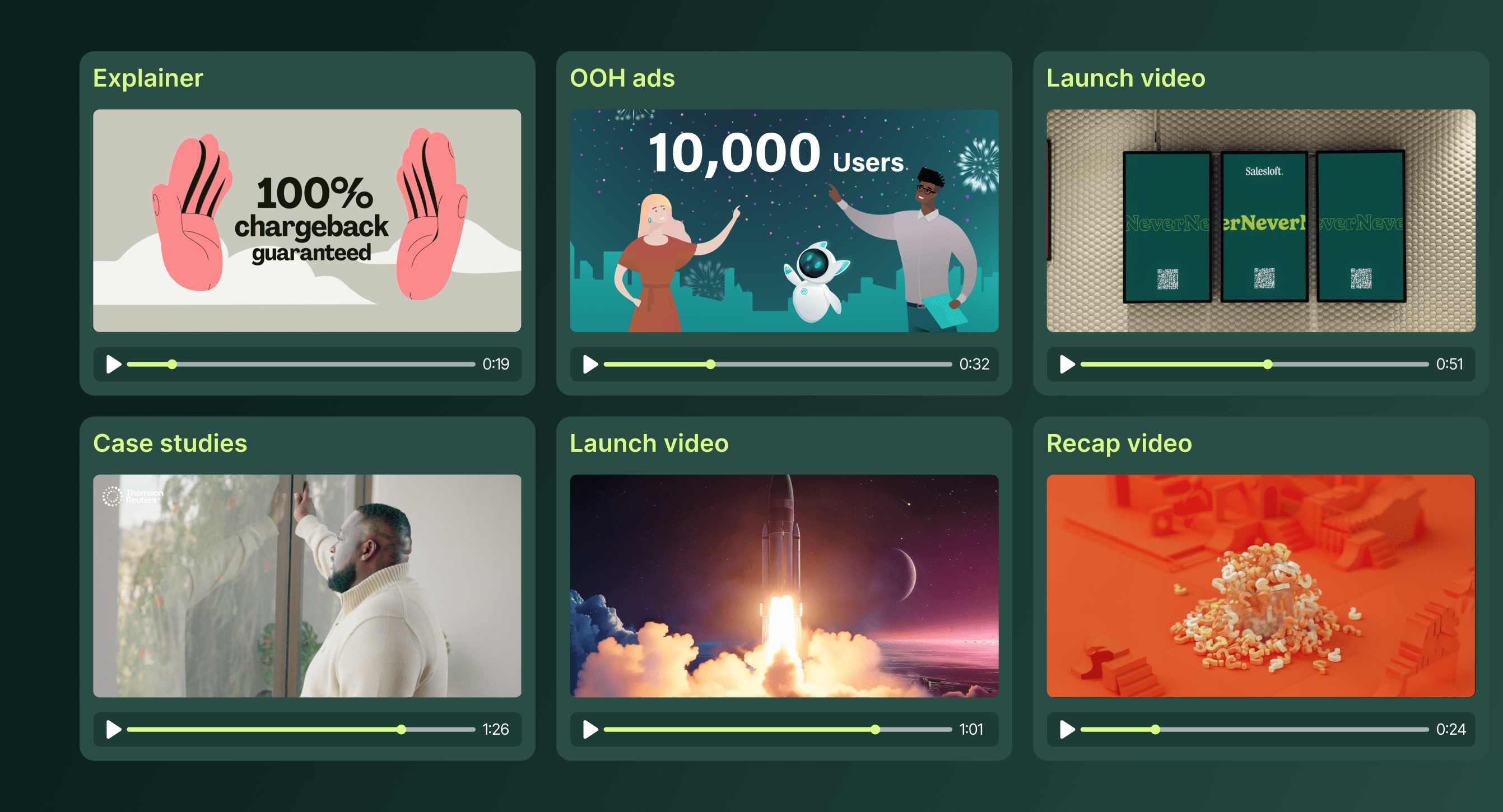
16 best B2B SaaS video examples from 2025
Today’s SaaS customers don’t have time to read 50-page whitepapers or sit through lengthy presentations. They skim, compare and decide on a product in a matter of minutes.With video, you can quickly demonstrate your value and drive more free trials and subscriptions. In fact, 93% of B2B buyers say video builds brand trust, and 91% of consumers feel more confident to purchase a product after they’ve watched a video.In 2026, a successful SaaS video strategy engages prospects at every stage of the marketing funnel and cuts through the noise in a crowded market. Explainer videos can, for example, build initial brand awareness, while product demos can deepen consideration. Shorter demos, feature deep dives and launch videos that also serve as PR tools now reign supreme.Already feeling a tad overwhelmed? We get it. It’s tough to produce a consistent stream of high-quality video, especially if your in-house team is stretched to the max.Let’s first explore the types of SaaS videos that work like a charm and unpack 2025’s best SaaS video marketing examples to inspire your 2026 video strategy.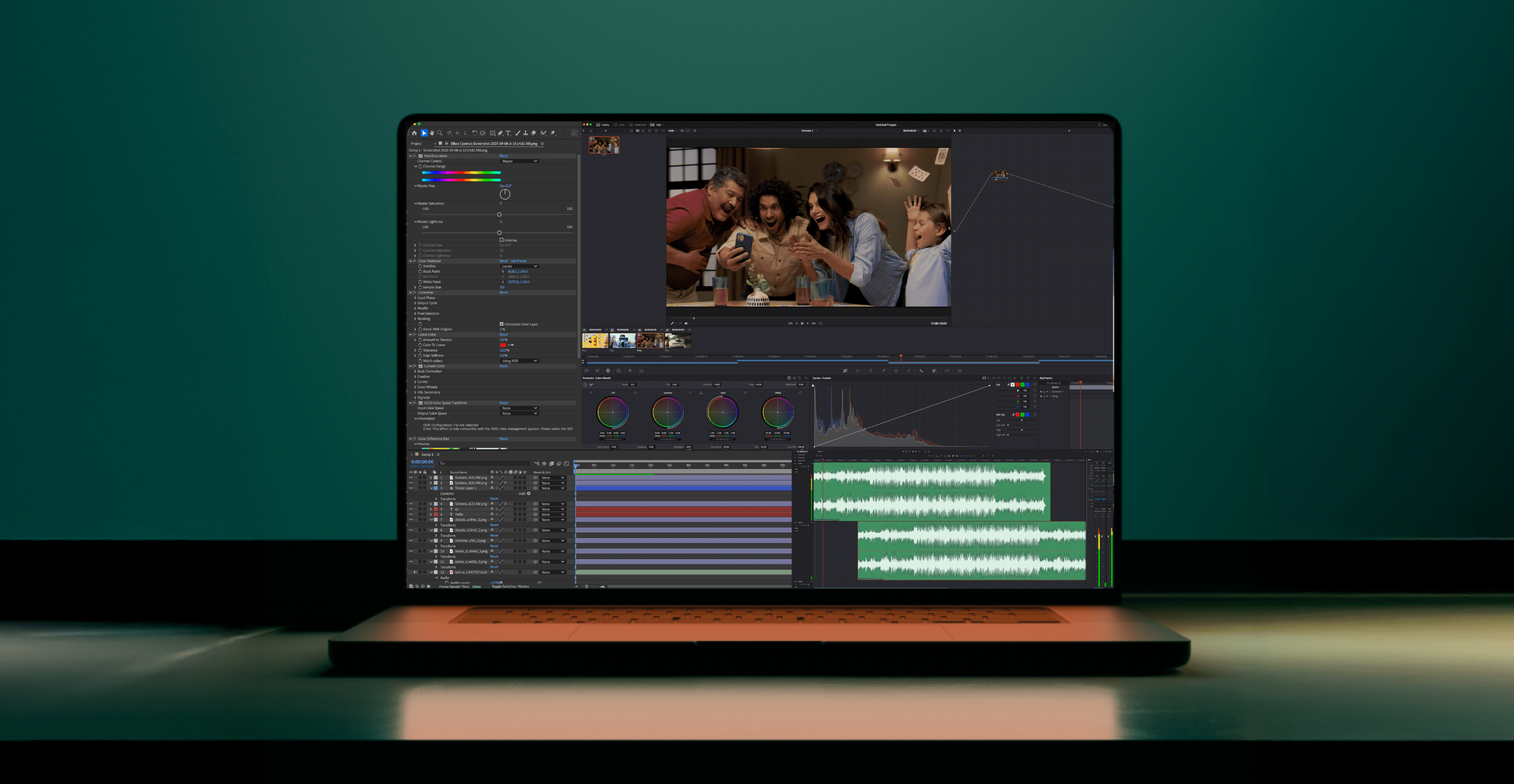
8 best video post-production services of 2025
Welcome to post-production, the stage in the video production process where raw footage becomes visual content that connects, delights and drives results. Here, editors, colorists, sound designers, animators and advanced technology work in concert to transform ideas into powerful visual stories.Today’s customers expect both authenticity and quality in the videos served in their feeds. User-generated content (UGC) can increase conversions by over 161%. Combine this format with professionally edited content, and you can expect even higher video engagement.But excellent video production can be resource-intensive, and many marketers (37%) admit they don’t quite know where to start. At the enterprise level, it also takes a skilled team (adept at everything from planning, editing and performance analysis to motion design and sound engineering) to create videos that drive ROI. In many instances, teams lack the skills or simply don’t have the capacity.If you’re on the hunt for a flexible video production partner who can help you up your views and shares, you’ve found the right page. In this article, we unpack how to choose a video post-production partner, what these companies should offer you and who the best picks are right now.How to choose a video post-production company
10 video production subscription companies & services in 2025
Today’s enterprise brands face a massive challenge: To build brand awareness and rope in more customers, they must produce dozens of videos in various formats, from short teasers and social reels to multilingual product demos and thought-leadership interviews. And the demand isn’t slowing down. 83% of consumers want even more video from brands than before.Most creative teams are stuck. Senior leaders at organizations of all sizes, from nimble startups to SaaS powerhouses, drown in overflow video work while other strategic tasks are deprioritized. Many creative and marketing leads are also burned out, a challenge our Overcommitted report unpacks.It’s no surprise, then, that video production ranks as the second most outsourced service, after paid social. However, many companies have begun to realize that traditional agencies and freelancers, once the default choices for outsourced creative work, no longer meet their needs. Agencies are slow, costly and cumbersome, while freelancers lack the capacity to scale.If this situation rings true, a video production subscription service could be a lifeline. These providers deliver a ready team of directors, editors, animators and post-production experts at one straightforward monthly rate. Let's check the top 10 and choose the best one for your company below.